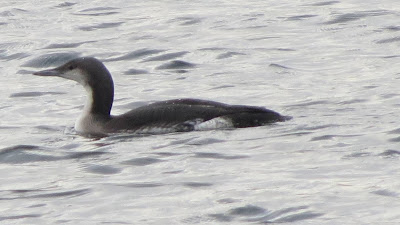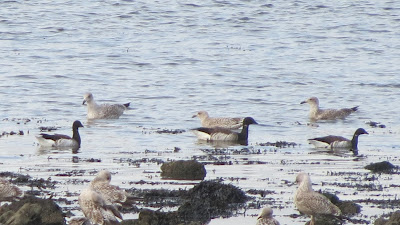It’s getting harder and harder to find new birds for my ‘2021 Non-motorised Bird List (or ‘Bike and Boots list’ if you prefer). The days are getting shorter and I’ve had to cancel several planned trips because of the weather. Then when I do get out in the field, the birds I haven't seen yet are proving very elusive. There are several species that I've not caught up with yet this year, which are being seen in the area by various people in various places, but never in the places where I happen to be at the times when I happen to be there. This list includes Velvet Scoter, Little Owl, Long-tailed Duck, Merlin, Bittern and the subject of today’s blog - the Short-eared Owl.
This species has been eluding me all year despite being seen intermittently from January onwards at several sites on both sides of the Tees. I’ve been making lots of trips to suitable locations such as Seaton Common and Cowpen Marsh but have never been there at the right time (or maybe I have not been looking in the right direction).
The Short-eared Owl is a medium sized owl that can be seen in daylight more than any of our other British Owls (although Barn Owls and Little Owls are also sometimes active during the day). That doesn’t make them easy to see though as they tend to frequent places away from humans - such as remote moorland in the summer and coastal salt-marshes in the winter.
Like its close relative the Long-eared Owl (a strictly nocturnal bird) it gets its name from the two ear-like tufts of feathers on the top of its head, but unlike its cousin, the Short-eared's ‘ears’ are not easy to see most of the time. I have put ‘ears’ in inverted commas because they are not really ears at all - the actual ears are hidden away under the feathers on the side of the head. Despite this, Short-eareds (or Shorties as they are often called by birders) have very good hearing (as do all owls) and can hear small prey hidden in long grass or heather. In many owl species the ears are positioned asymmetrically on the bird’s head, with the left being lower than the right and also out of line in the vertical plane. It is thought that this enables them to pinpoint the exact location of their prey. I am not sure if this is the case for Shorties but it seems likely as, even though they are more diurnal than other owls, they are often active in low light and also hunt prey that lives in dense vegetation so such an ability would come in very handy.
On Saturday just gone I had a fruitless (and wet) trip to Redcar hoping to see a Velvet Scoter. I was not helped by the fact that I forgot to ‘refresh’ the tide-times webpage on my phone (Doh!) so instead of getting there at low tide, I arrived just before high tide when it is often harder to see scoters and other sea ducks. Consequently I was not feeling very optimistic the next day when I decided to cycle up to Greatham Creek, and Seals Sands.
However, that changed when I got to the first of the metal bird-watching screens looking out over Cowpen Marsh (just south of Greatham Creek). There was a birder there already and in response to my usual greeting of ‘Anything about?’ he said ‘There’s been a Peregrine through, frightening all the ducks and waders, and also a Marsh Harrier is around. Oh, and there’s a Short-eared Owl over there’.
It wasn’t quite as easy as it may sound though - the area where he had seen the owl was quite distant and at first I didn’t see anything. Then the Marsh Harrier made an appearance, which was nice. Although I’ve seen several this year, they are spectacular birds and it’s great to see a formerly rare species doing quite well (at a time when so many once-common birds are decreasing in numbers alarmingly.)
Two more birders had come along by this time and so there were four pairs of eyes scanning the area when the Marsh Harrier flew past again and, this time, was joined in the air by not one but TWO Short-eared Owls. Shorties have a distinctive long-winged shape, a particular way of flying and are quite pale, and these made it fairly easy to distinguish them from the Marsh Harrier (or any other potential confusion species), even at some distance. I was able to follow one of the owls in my telescope for several minutes as it flew around, often quite high in the air, but eventually it went out of sight behind a pile of earth on the horizon and I didn’t see it again. There was definitely no chance of a photo though, at that distance and with my little camera.
The winter afternoon was dragging on so after a quick visit to Greatham Creek and the Seal Sands hide (seeing some Twite, lots of Lapwings and a few Shelducks among other things) I headed back towards home in the gathering dusk - a happy birder with my NMT list on 173 bird species for the year.












































